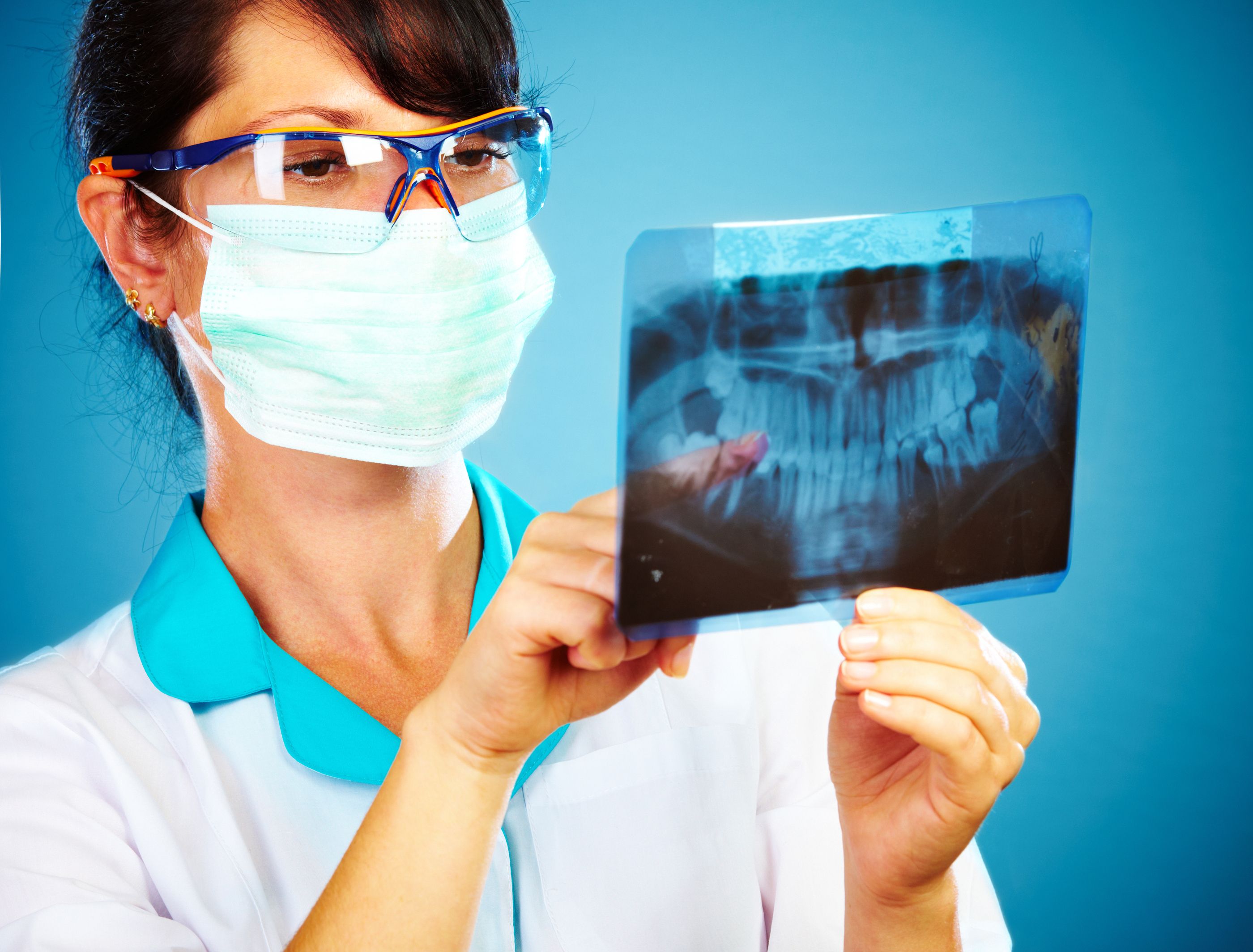Why You Shouldn’t Avoid Dental X-Rays Due to Radiation Exposure

An Ounce of Prevention…
Unless Dr. Laudie has become Superman overnight, not all tooth decay will be visible during the course of a regular dental exam. To maintain stellar oral health, it is vital to catch decay and damage that may be hiding between teeth. Dental x-rays allow for hidden damage and decay to be caught early, which tends to decrease the likelihood of infection and associated pain. Treatment plans are often simpler and less extensive with early detection. Traditional film x-rays and digital x-rays are two of the options available that can catch problems early. Digital x-rays are becoming more prominent in offices as technology and related equipment is updated. As a bonus, digital x-rays offer improved safety and flexibility.
What About Radiation?
Light and radiation are types of energy that travel in waves. Light is simply not strong enough to pass through the body like radiation. Radiation is measured in a larger unit called a rem, though for most normal exposure, it is common to see millirem (mrem). This is the equivalent of comparing a meter to a millimeter. According to the NCRP, National Council on Radiation Protection, background sources of radiation expose U.S. residents to about 360 mrem per year. Besides outer space and the earth itself, simple everyday living causes some exposure.
- Brick house = approx. 10 mrem/year
- Gas stove = approx. 10 mrem/year
- Smoke detectors = approx. 1 mrem/year
- Reading a book (not an e-book) = approx. 1 mrem/year
- Flight (by airplane) = approx. 5 mrem/flight
- Sleeping next to another human = approx. 2 mrem/year
- Dental x-rays = approx. 2-3 mrem
Generally speaking, unless a dental emergency arises, there is no reason to receive more than one x-ray in a given year. In fact, if it is determined after the initial exam that a patient is in optimal dental health, yearly x-rays are not always recommended. Dr. Jacob Laudie provides thorough exams and guides his patients on the path that is right for them. Children with ever-changing mouths and suspected dental issues may require more during treatment, but this would be discussed after the initial exams. We take all necessary precautions to limit our patient’s radiation exposure.
Safety First
What precautions are in place? Although exposure to radiation during dental x-rays is very low. Leaded aprons provide quality protection to the chest and abdominal areas. During pregnancy, the aprons even provide sufficient protection to both mother and baby in utero. Because the thyroid is very sensitive to radiation, a leaded thyroid collar is worn to protect the thyroid. Summit Dental is all about the safety of our community members in Lees Summit, MO.
Benefits Far Outweigh Risks
Ionizing radiation, as is used in x-rays, is regulated by each state to protect its people. Technology continues to advance rapidly, which allows for accurate x-rays with less and less exposure to radiation. Dental x-rays are the only way to catch many jaw and mouth malformations in children. They give dentists like Dr. Laudie a clear vision from which they are able to form a treatment plan for all patients. Diagnosing dental conditions early is vital in providing the easiest treatment possible with the best outcomes.
